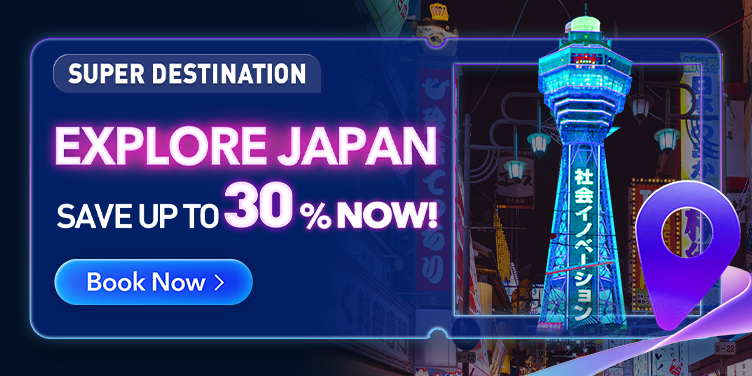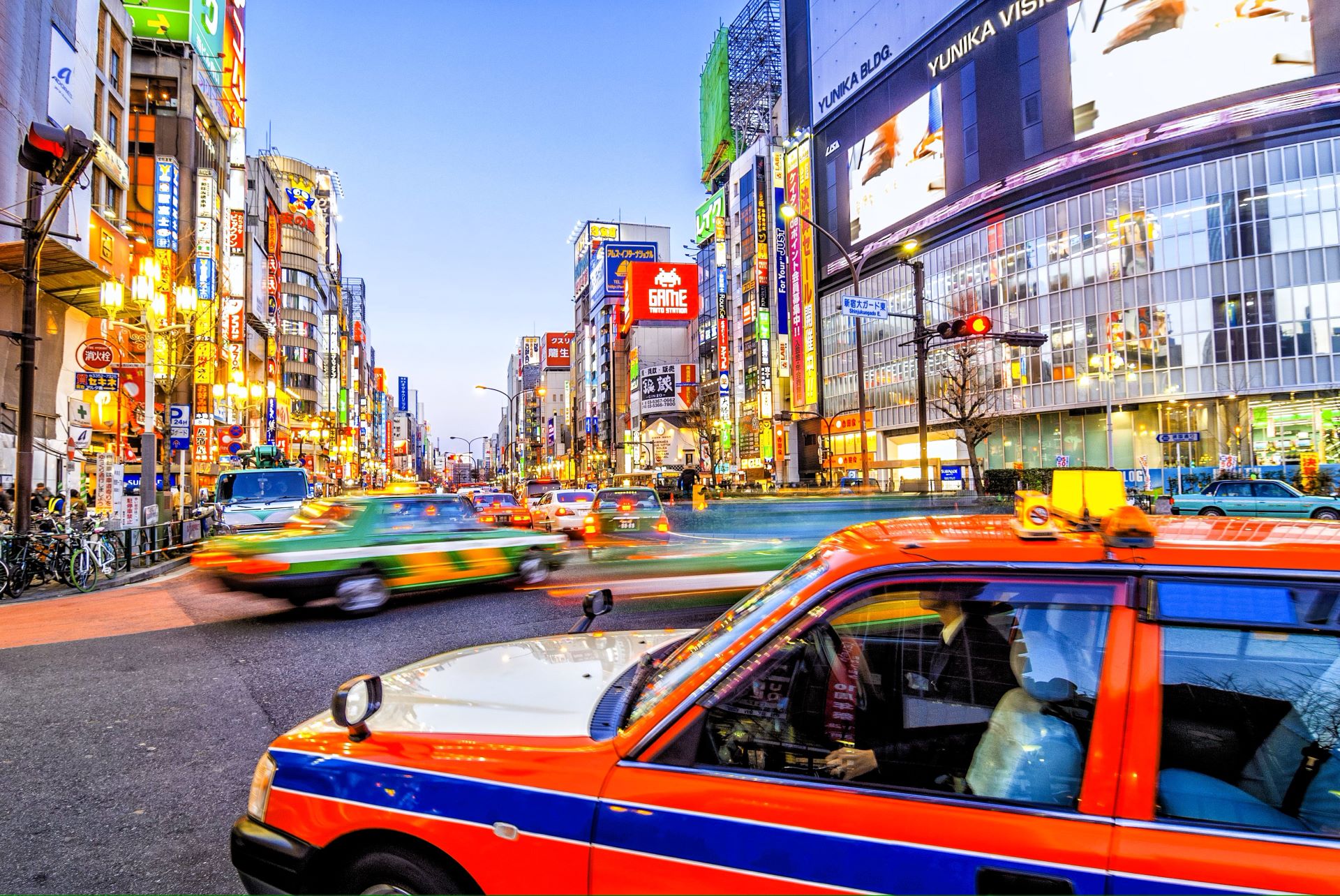Welcome to Shinjuku, one of Tokyo’s most vibrant and bustling districts! Whether you’re here to explore the neon-lit streets of Kabukicho, relax in Shinjuku Gyoen National Garden, or marvel at the skyscrapers of West Shinjuku, getting around this sprawling area can seem daunting at first. As a major transportation hub, Shinjuku offers a variety of options to suit every traveler’s needs, from trains and subways to buses, taxis, and even walking. Having navigated Shinjuku’s maze of streets and stations many times, I’ve put together this comprehensive guide to help you understand and utilize the transport options available. Let’s break down how to get around Shinjuku efficiently, affordably, and with confidence!
Why Transportation in Shinjuku Can Be Tricky
Shinjuku is not only a tourist hotspot but also a critical transit hub for millions of commuters daily. Centered around Shinjuku Station—the busiest train station in the world with over 3.5 million passengers passing through each day—it connects central Tokyo to surrounding areas and beyond. The sheer volume of people, multiple railway lines, and the district’s sprawling layout can overwhelm first-timers. Add in language barriers and the fast pace of Tokyo life, and it’s easy to feel lost. But don’t worry! With the right tools and knowledge, getting around Shinjuku is manageable and even enjoyable.
1. Mastering Shinjuku Station: The Heart of Transport
Shinjuku Station is your starting point for most journeys in and out of the district. It’s a massive complex serving several railway companies, and understanding its role is key to getting around.
- Lines and Operators: Shinjuku Station connects JR East (including the popular Yamanote Line), Tokyo Metro, Toei Subway, Odakyu Electric Railway, and Keio Corporation. These lines take you to destinations within Tokyo (like Shibuya or Akihabara) and further afield (like Hakone or Mount Fuji).
- Key Areas: The station is divided into East (lively, near Kabukicho), West (business district), and South (near Shinjuku Gyoen) exits. Knowing which exit to use saves time and confusion.
- How to Navigate: Use a Suica or Pasmo card (rechargeable IC cards, available at ticket machines for about 2,000 yen) for seamless travel across most lines. Download apps like Google Maps or Hyperdia for real-time routes and platform info. Look for color-coded signs (e.g., green for Yamanote Line) and ask staff at information desks if lost.
Cost: Fares start at 160-200 yen for short trips within Tokyo on JR or subway lines.
Tip: Avoid rush hours (7-9 AM, 5-8 PM) due to intense crowding. Allow extra time (15-30 minutes) for transfers or finding exits in Shinjuku Station’s labyrinth.
2. Trains and Subways: The Fastest Way to Move
Trains and subways are the backbone of transportation in Shinjuku, offering speed and reliability for getting around the district and beyond.
- JR Lines: Operated by JR East, the Yamanote Line (green) loops through major Tokyo spots like Shibuya, Harajuku, and Tokyo Station. Other JR lines like the Chuo Line connect to farther destinations. Access these from central ticket gates in Shinjuku Station.
- Tokyo Metro and Toei Subway: These underground lines are great for shorter hops or reaching areas not covered by JR. The Marunouchi Line (red) and Shinjuku Line (light green) are accessible via underground passages in Shinjuku Station or nearby Shinjuku-sanchome Station.
- Private Lines (Odakyu and Keio): Located on the West Side of Shinjuku Station, Odakyu connects to Hakone (a hot spring getaway), while Keio goes to Hachioji and other suburbs. These are ideal for day trips.
Cost: Fares range from 160 yen (short subway ride) to 1,500+ yen for longer trips on private lines. Suica/Pasmo cards work on all these systems.
How to Use: Buy or recharge your IC card at ticket machines (many have English options). Tap in at ticket gates, follow signs to your platform, and check electronic boards for departure times. Most signs and announcements include English.
Tip: If transferring between lines (e.g., JR to Tokyo Metro), you may need to exit one gate and enter another—follow “Transfer” signs. Apps like Hyperdia show exact transfer times and walking distances within stations.
3. Buses: A Scenic and Flexible Option
Buses in Shinjuku are less intimidating than trains for some tourists and offer a chance to see the city above ground. They’re useful for short trips within the district or reaching nearby areas not directly served by rail.
- Local Buses: Operated by Toei and other companies, these buses connect Shinjuku Station to places like Shinjuku Gyoen or residential areas. Key stops are near the West Exit (Shinjuku Bus Terminal) and South Exit.
- Shinjuku WE Bus: This loop bus operates within Shinjuku, stopping at major spots like the Tokyo Metropolitan Government Building and Kabukicho. It’s tourist-friendly with English announcements.
- Long-Distance Buses: From the Shinjuku Expressway Bus Terminal (near the New South Gate), you can catch overnight buses to destinations like Kyoto, Osaka, or Hiroshima—a budget-friendly alternative to the Shinkansen.
Cost: Local bus fares are around 210 yen per ride (pay with exact change or Suica/Pasmo). The Shinjuku WE Bus costs 100 yen per ride for adults. Long-distance fares vary (3,000-7,000 yen one-way).
How to Use: For local buses, board at designated stops (check maps at Shinjuku Station or online). Pay when boarding or exiting (depending on the bus—follow signs). For long-distance buses, book tickets online via sites like Willer Express or at the terminal.
Tip: Buses can be slower due to traffic, so plan extra time. Download the “Tokyo Bus Guide” app or check Google Maps for routes and schedules.
4. Taxis: Convenience at a Cost
Taxis are a convenient, albeit pricier, way to get around Shinjuku, especially if you’re carrying luggage, traveling late at night, or heading to a specific spot not near a station.
- Where to Find Them: Taxi stands are plentiful near Shinjuku Station’s major exits (East, West, and South). You can also hail one on the street if the red light on the windshield is lit (indicating availability).
- How They Work: Taxis in Japan are clean, safe, and reliable. Drivers use meters, and doors open/close automatically (don’t touch them). Most drivers speak little English, so have your destination written in Japanese or show it on a map/app.
- Ride-Sharing Apps: Services like Uber and JapanTaxi operate in Tokyo, though they’re less common than traditional taxis. Download the app in advance if you prefer booking digitally.
Cost: Base fare starts at 500-600 yen for the first 1-2 km, with additional charges per distance or time (around 100 yen per 200-300 meters). A short trip within Shinjuku might cost 1,000-2,000 yen; late-night fares (10 PM-5 AM) have a 20-30% surcharge.
Tip: Carry cash, as not all taxis accept cards. Avoid taxis during rush hours or heavy rain when traffic jams spike costs. For short trips, walking or trains might be faster.
5. Walking: Explore Shinjuku on Foot
Shinjuku is surprisingly walkable, especially for short distances between attractions. Walking lets you soak in the district’s energy, discover hidden alleys, and avoid the complexity of public transport.
- Key Walking Areas: From Shinjuku Station East Exit, it’s a 5-10 minute walk to Kabukicho or Golden Gai. Shinjuku Gyoen is about 10-15 minutes from the South Exit. West Shinjuku’s skyscraper district is a similar distance from the West Exit.
- Benefits: Walking is free, offers photo ops (like the 3D cat billboard), and helps you get a feel for Shinjuku’s layout. Many streets have English signs or maps at intersections.
- Challenges: Crowded sidewalks, especially near the station, and occasional lack of crosswalks can slow you down. Tokyo’s summer heat or winter chill might also make long walks less pleasant.
Cost: Free!
How to Use: Use Google Maps or a physical map (available at Shinjuku Tourist Information Center near the West Exit) to plot your route. Stick to pedestrian paths, obey traffic signals, and watch for cyclists.
Tip: Wear comfortable shoes—Shinjuku’s streets involve a lot of walking and occasional stairs. Carry a small backpack for water and essentials, especially if exploring for hours.
6. Bicycles: A Less Common but Fun Option
Cycling isn’t as popular in Shinjuku as in some other parts of Tokyo due to heavy traffic and limited bike lanes, but it’s an option for the adventurous.
- Rental Services: Bike-sharing apps like Docomo Bike Share or local rental shops near Shinjuku Station offer short-term rentals. Look for docking stations around major exits.
- Where to Ride: Stick to quieter side streets or designated bike paths (rare in central Shinjuku). Areas near Shinjuku Gyoen or along the Kanda River are more bike-friendly.
- Rules: Helmets aren’t mandatory but recommended. Ride on the left side of the road, follow traffic signals, and avoid busy pedestrian areas.
Cost: Rentals start at 150-500 yen for 30 minutes or 1,000-2,000 yen per day, depending on the service.
Tip: Cycling is best for short, casual trips rather than commuting through Shinjuku’s core. Be cautious of cars and pedestrians—Tokyo drivers aren’t always bike-aware.
7. Day Passes and Travel Cards: Save Money on Transport
If you plan to move around Shinjuku and Tokyo frequently, consider these cost-saving options:
- Suica/Pasmo Cards: Beyond basic fares, these cards offer convenience and small discounts on transfers. They also work for purchases at convenience stores and vending machines.
- Tokyo Metro Pass: A 24-hour (600 yen), 48-hour (1,200 yen), or 72-hour (1,500 yen) pass covers unlimited rides on Tokyo Metro and Toei Subway lines—great if you’re sticking to subways.
- JR Pass: If you’re traveling beyond Tokyo (e.g., to Kyoto or Hakone), a Japan Rail Pass (starting at 50,000 yen for 7 days) covers JR lines, including the Shinkansen. Activate it at Shinjuku Station’s JR Ticket Office.
How to Buy: Purchase passes at ticket machines or counters in Shinjuku Station. Staff at information desks can help with activation or advice.
Tip: Calculate your planned trips to see if a pass saves money. For a day or two in Shinjuku, a Suica card with pay-as-you-go might be enough.
Practical Tips for Getting Around Shinjuku
- Timing: Avoid peak hours (7-9 AM, 5-8 PM) on trains and buses to escape crowds. Late-night options (taxis, 24-hour buses, or walking) are handy after a night out in Kabukicho.
- Language: Many signs and apps have English, but carry a translation app like Google Translate for emergencies. Learn basic phrases like “Sumimasen, [place] wa doko desu ka?” (Excuse me, where is [place]?).
- Safety: Shinjuku is generally safe, but keep belongings secure in crowded areas like Shinjuku Station. Stick to well-lit streets if walking at night.
- Luggage: Use coin lockers (300-700 yen) at Shinjuku Station for heavy bags, or opt for luggage delivery services (available at major stations or hotels) to travel light.
- Connectivity: Free Wi-Fi is available at Shinjuku Station (“Shinjuku Free Wi-Fi”) and some buses. A pocket Wi-Fi or SIM card ensures you can use navigation apps anywhere.
Final Thoughts on Navigating Shinjuku
Getting around Shinjuku may seem complex at first, but its transport options cater to every preference—whether you’re a budget traveler hopping on subways, a sightseer enjoying a bus ride, or someone splurging on a taxi for convenience. The key is preparation: know your route, use the right tools (apps, IC cards), and embrace the occasional wrong turn as part of the adventure. Shinjuku’s energy and diversity make every journey, no matter the mode, a unique glimpse into Tokyo life.
Have a specific destination in Shinjuku or a transport question? Drop a comment below—I’d love to help with personalized tips or hear about your experiences getting around this incredible district!
Safe travels, and enjoy exploring Shinjuku! 🚉🚌🚕


